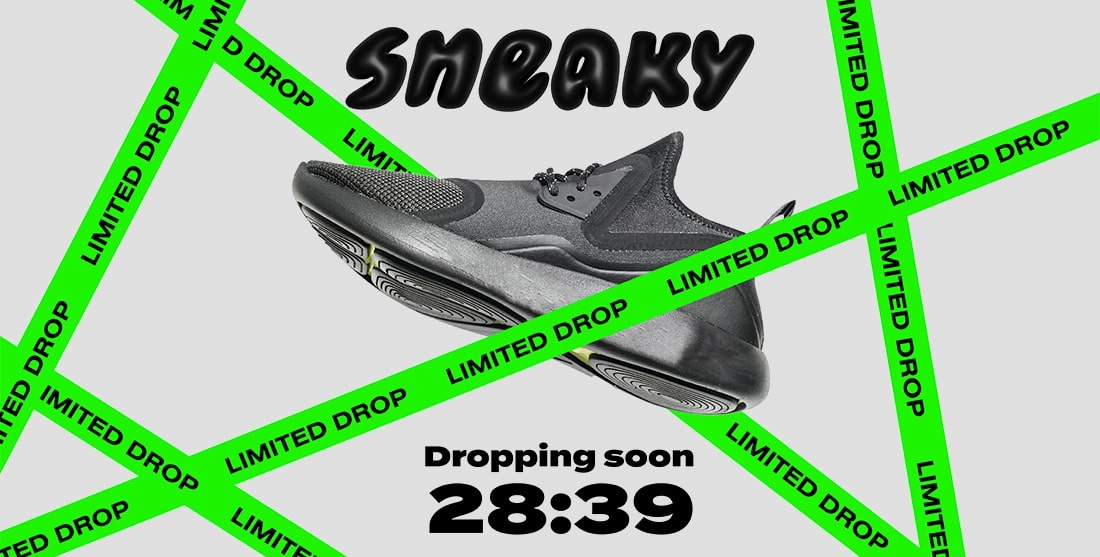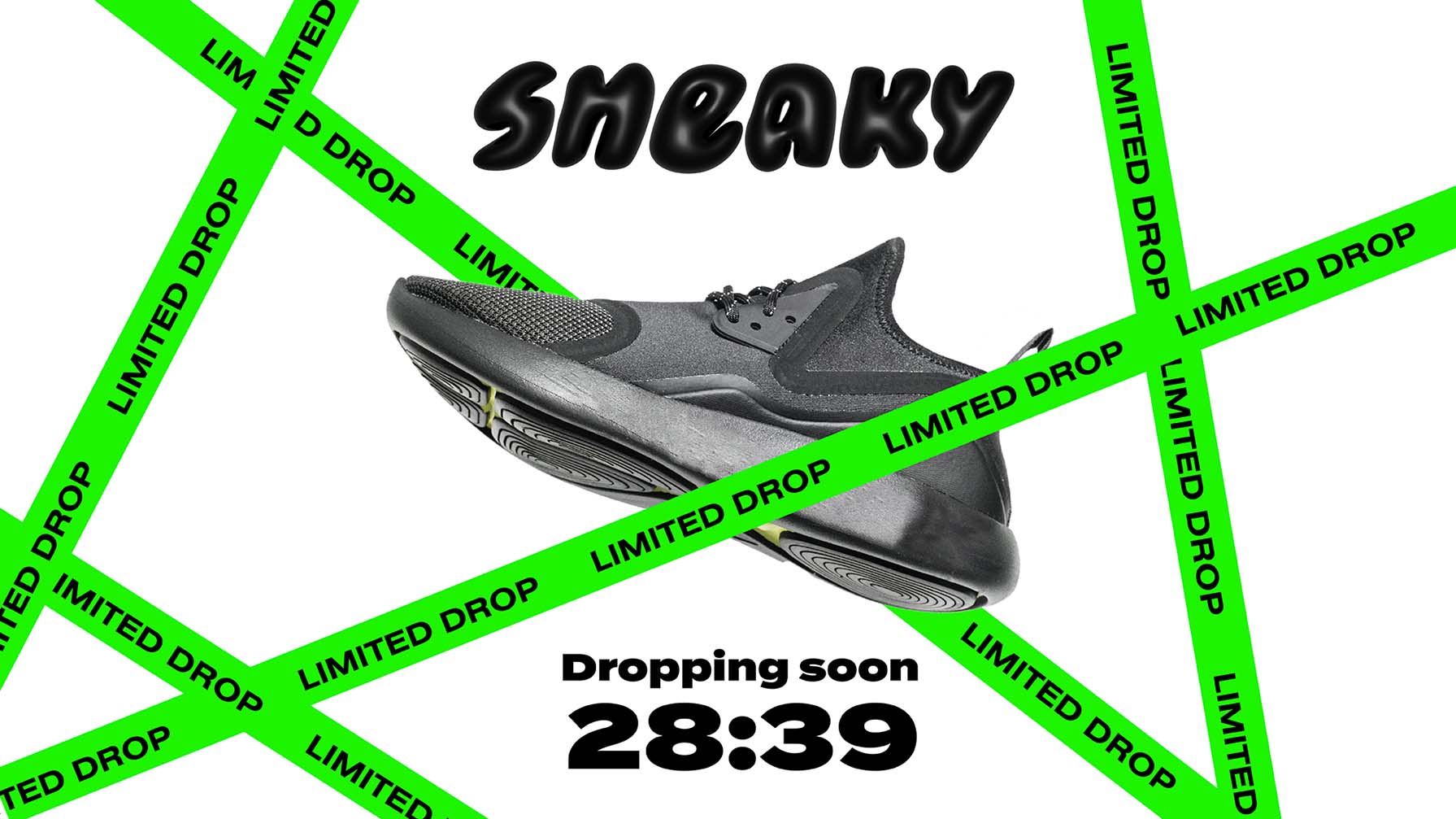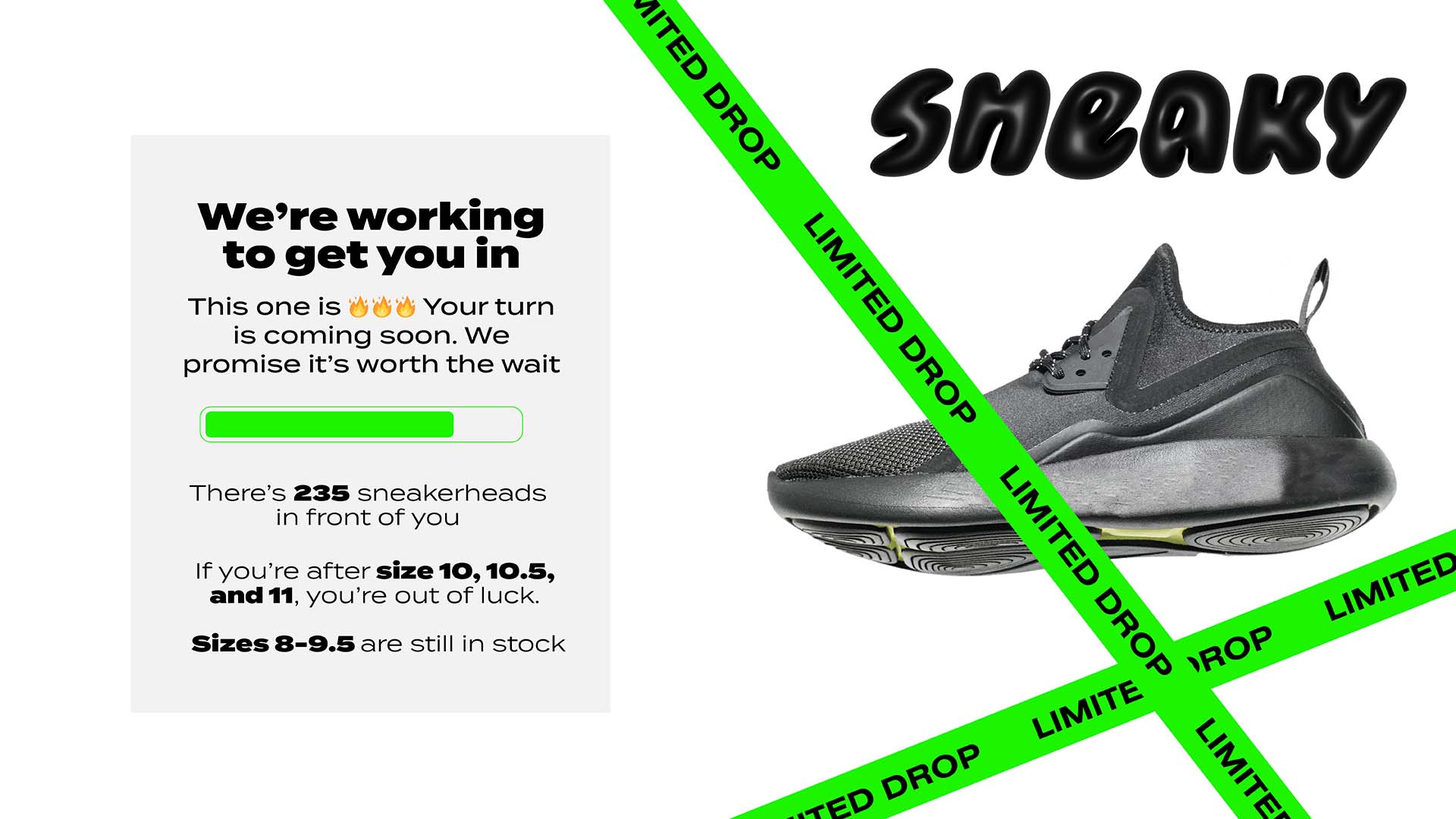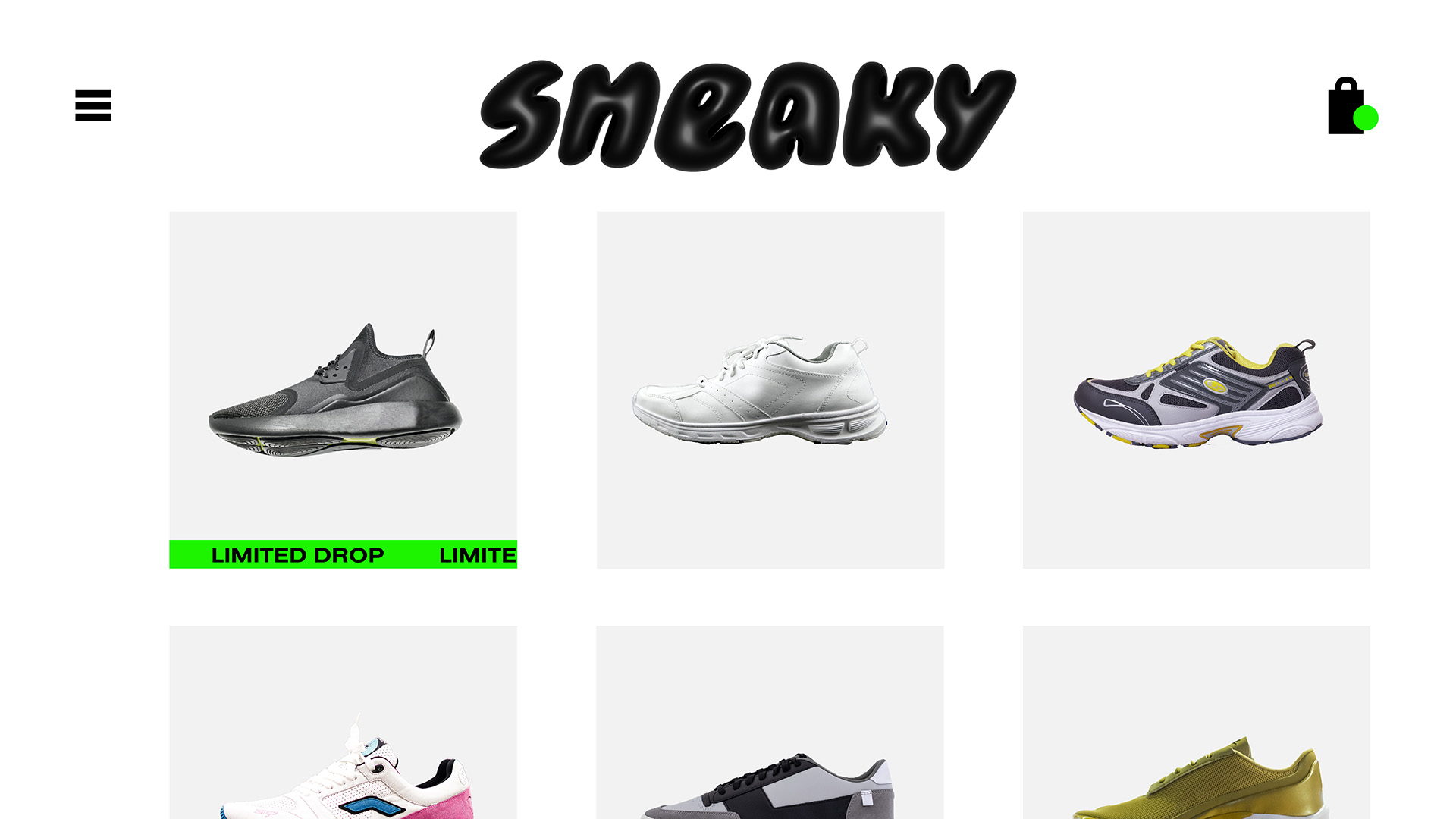Brand collaborations are a proven strategy for generating hype, driving sales, and creating a big brand moment. But the massive attention and traffic brand collabs attract can be a blessing and a curse. Discover why major retailers are running their brand collaboration drops with a virtual waiting room, and how you can use one to capitalize on your next drop.
The brand collaboration trend has taken over retail. 2023 was a record year for retail collaborations and product drops. Every week, a new brand announces a collaborative drop with a celebrity, influencer, athlete, designer, or other brand.
Brands across industries have discovered the powerful marketing benefits of product drops and brand collabs, and are regularly using them to make headlines, build hype, and get creative with their product offerings.
But high-profile product drops don’t come without challenges. Brand collabs drive massive surges in online traffic to ecommerce websites, often causing them to oversell product or come crashing down when they’re at their most visible.
Discover why major retailers like The North Face, Zalando, and SNIPES use Queue-it’s virtual waiting room to handle demand, block bots, and ensure fairness during limited-edition collaborative drops. Learn why it’s so hard to run successful drops and how a virtual waiting room can help.
Brands use a virtual waiting room (AKA an online queue) during major online events like brand collabs to protect their websites from surging traffic, block bots, and ensure a smooth and fair user experience.
Many companies learned the hard way that web traffic during product drops and brand collabs is anything but ordinary.
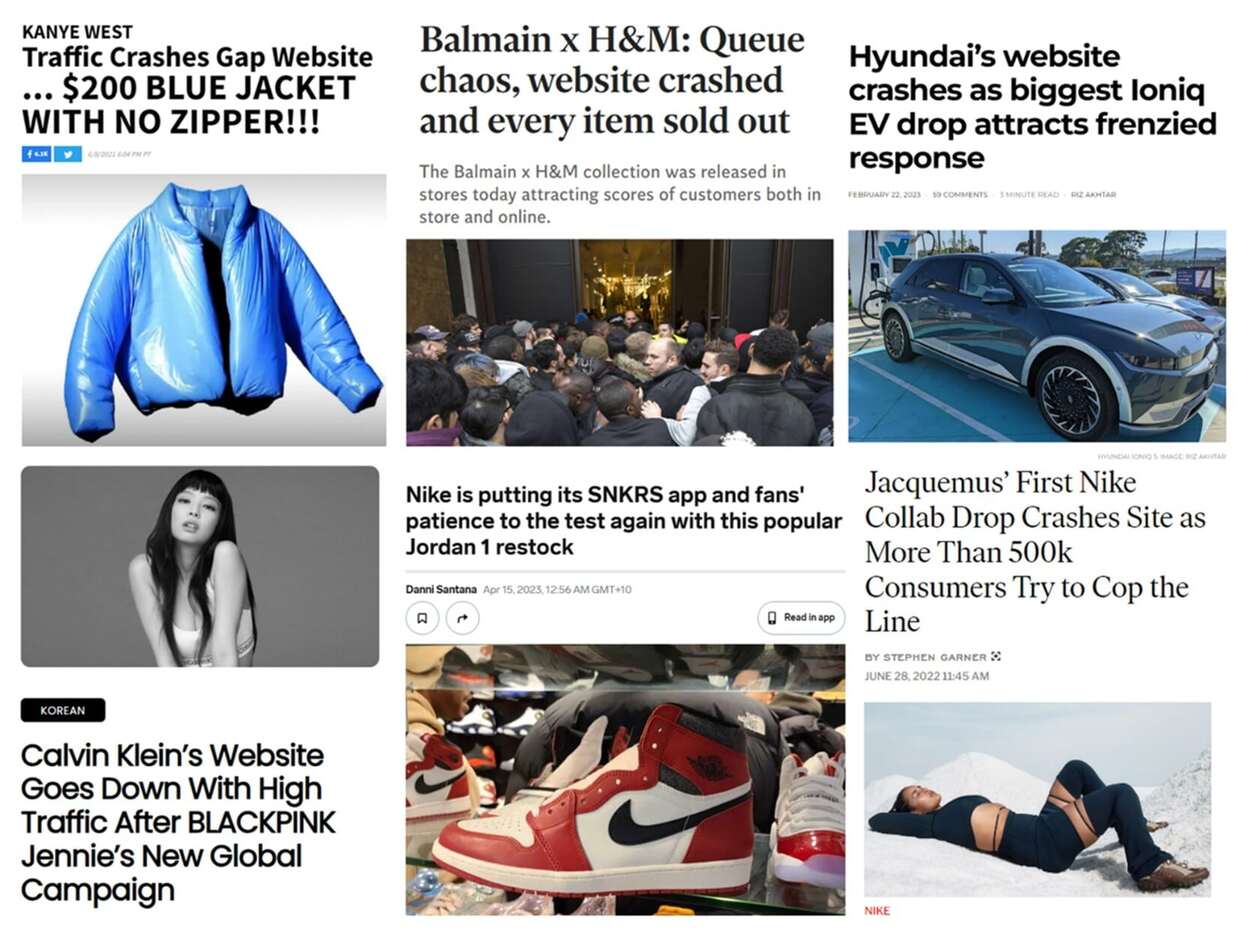
Nike, GAP, H&M, Target, Calvin Klein, Gucci, Levi's—sudden surges in traffic during limited-edition drops have caused all these brands' sites to crash, slowdown, and oversell. These site problems:
- Harm sales: customers can’t check out on a website that doesn’t work.
- Damage hype: the hype you've worked so hard to build dies down while you work on getting things working.
- Drain resources: IT teams work frantically to restore the site, while customer service and marketing teams work on crisis management.
- Tarnish reputation: customers turn to social media to complain and journalists quickly write hit pieces about your botched drop.
- Threaten relationships: your failure reflects poorly on your collaborators, who may question whether you’re the right brand to work with.
"Downtime of even one to two seconds can be very costly. When you multiply that by 60,000-100,000 people, that adds up. Whenever anyone else is involved as well, influencers or another brand, we don't want to affect how their audiences view them."
ALEX WAKIM, DIRECTOR OF OPERATIONS & BUSINESS DEVELOPMENT

And if your product is limited-edition and can be resold for more than you’re selling it, then it’s not just regular customers your site has to handle—you’ll also have to deal with bots.
We’ve seen product drops and brand collabs where:
- 1.6 out of 1.7 million visitors (97%) were bots.
- 400,000 out of 428,000 visitors (94%) were bots.
For hyped product drops, human-to-bot ratios like this aren’t uncommon. If your product is limited in quantity and can be resold for profit, then resellers will do everything they can to snatch them out of the hands of your real customers.
RELATED: Behind-the-scenes of a Product Drop: Rewarding Members & Blocking 700k Bots
Bots add to existing product drop problems like site overload and overselling, while also creating new problems like unfair sales, frustrated customers, and drained resources.
Virtual waiting rooms let companies tackle these problems and run high-profile brand collabs with confidence. They empower you to:
- Ensure website performance: The virtual waiting room takes the spike in load from the drop and lets you control the flow of customers into your site, ensuring you never exceed the technical capacity of your systems and can sell as fast as possible without crashing or overselling.
- Improve customer experience: Virtual waiting rooms replace the frustrating experience of a website crash or slowdown with transparent and controlled access, including detailed info on spot in line and estimated wait time on a branded page that can feature interactive elements like videos or games.
- Deliver fair access: In scenarios like limited-time offers or exclusive drops, a virtual waiting room provides sophisticated fairness mechanisms like first-come-first-served access or live raffle randomization, ensuring all customers have a fair shot at your offer.
- Block bots & bad actors: A virtual waiting room keeps bots off your site like a security checkpoint at an airport keeps bad actors off flights. It sits between a webpage on your site and the purchase path. As visitors flow through it in a controlled, orderly manner, you can run identification checks with Queue-it’s suite of bot mitigation tools to determine whether you’ll let them pass through.
RELATED: The Comprehensive Guide to Virtual Waiting Rooms: All Your Questions Answered
Virtual waiting rooms work by automatically redirecting online visitors to a waiting room when they enter a covered part of the user journey, for example visiting a landing page or proceeding to checkout.
Customers are seamlessly flowed from the site to a branded waiting room like the one below, where they see their number in line, their estimated wait time, and a progress bar. From here, they're flowed back to your site at the rate it can handle in a fair, controlled order.
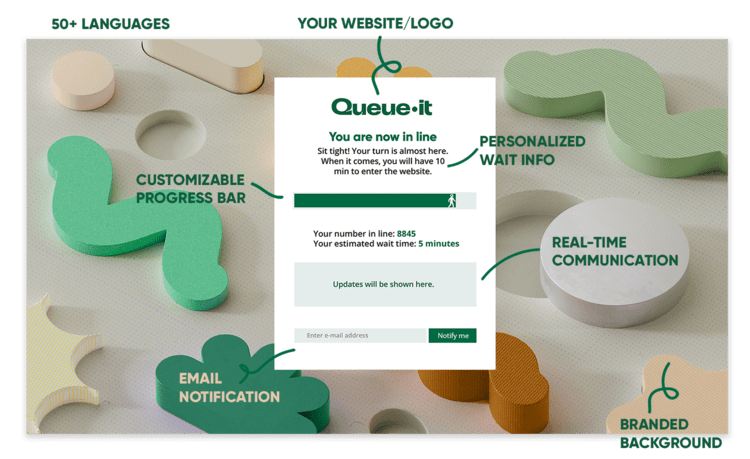
While brands often customize their waiting rooms both in style and in URL to look like the original site, the visitors in them are hosted on the virtual waiting room provider’s servers. This means no strain is placed on the target website’s servers while visitors wait for access.
For brand collab drops, retailers typically use the virtual waiting room in pre-queue mode to ensure fairness and build hype.
With a pre-queue, visitors who hit the protected page get redirected to a branded waiting room that counts down till the drop goes live.
When the timer hits zero, all visitors in the pre-queue are randomized, just like a raffle, and are flowed to a queue in their randomly assigned order. Visitors who arrive later are added to the back of the queue and proceed to the event in a first-in, first-out order.
The carousel below shows the three stages of the user journey when a waiting room is used for a scheduled event, in this case, a sneaker drop.
Let’s look at some real-world examples that show how the virtual waiting room protects retail sites during large drops and brand collabs.
When cycling apparel brand Rapha teamed up with one of the hottest names in streetwear for a product drop, they knew traffic would be massive.
“Our partner only releases using this product drop method,” says Tristan Watson, Rapha’s Engineering Manager. “Their whole technology stack is built around selling out—fast. In our first meeting, they disclosed they had seen 100,000 requests every few minutes.”
Watson and the team were concerned about crashes, overselling, and bots. And to add to the challenges, they’d promised their loyalty program member’s early access.
To tackle these challenges, Rapha teamed up with Queue-it and set up two waiting rooms to protect their site during the drop—one exclusively for members, and another for the general public.
As the chart below shows, despite 50,000 visitors hitting the sale—at times in traffic spikes of almost 2,000 per minute—the flow of traffic to Rapha’s drop page never exceeded 400 visitors per minute.
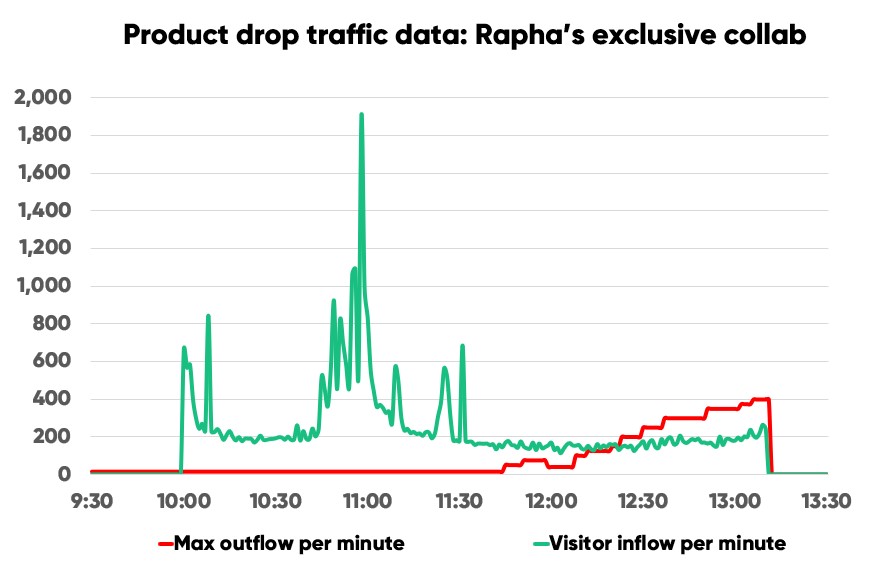
“Queue-it’s a great bolt-on piece of infrastructure, completely dynamic to our needs. The virtual waiting room made much more sense than re-architecting our systems to try to deal with the insanity of product drops that take place a few times a year.”
TRISTAN WATSON, ENGINEERING MANAGER

By splitting the traffic between two waiting rooms, Rapha was able to flow all their members to the site first. They only began flowing traffic from their general access waiting room to the site once they saw that all members had got a chance to purchase.
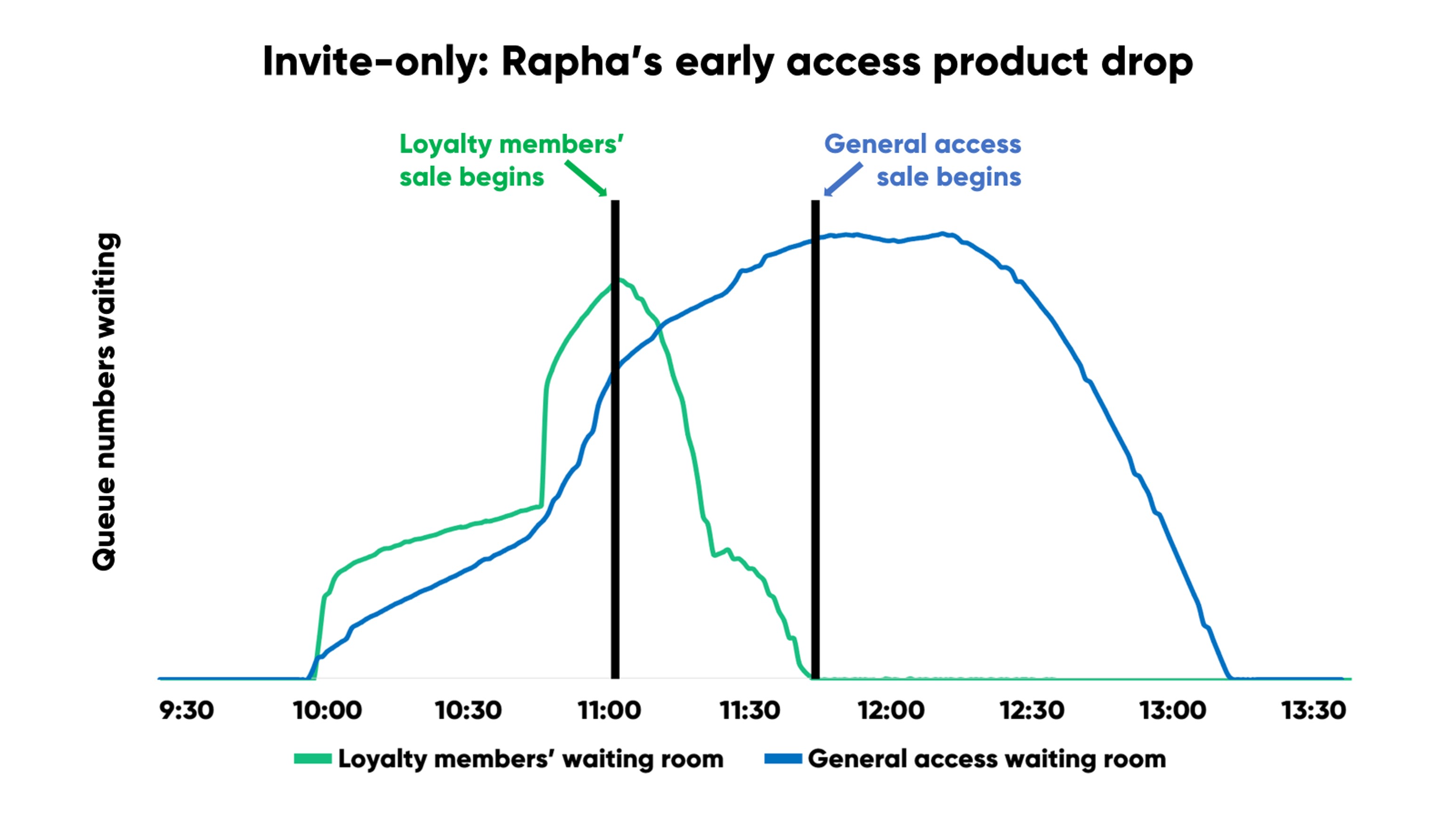
This strategy allowed Rapha to ensure secure early access for members while protecting their site, blocking bots, and giving members of the general public a fair experience.
“Our members expect to get the benefits they pay for. Queue-it helped us deliver the exclusive drop access members were promised and gave us the peace of mind the website would be there for them.”
TRISTAN WATSON, ENGINEERING MANAGER
RELATED: Deliver Exclusive Access at Scale With The Invite-only Waiting Room
- Build-a-Bear used a virtual waiting room to handle “record-setting” traffic during the drop of a limited-edition collaboration with a popular TV show.
- A household name gaming company blocked over 700,000 bots and drove a 40% increase in loyalty program sign-ups across four drops with the invite-only waiting room.
- Hills Field doubled their sales and tripled their cross selling by using the waiting room for a limited-edition drop.
- SNIPES saves “a lot of time, human resources, and money” by using a virtual waiting room for their limited-edition sneaker drops.
- MOS BURGERS handled massive traffic and received overwhelmingly positive feedback after using the waiting room for a “lucky bag” drop in collaboration with a popular Japanese cartoon character.
“The peace of mind we get from using Queue-it is outstanding. The best thing is feeling relaxed, not having to worry, knowing that everything will be okay. The virtual waiting room reacts to and controls our traffic instantaneously”
THIBAUD SIMOND, INFRASTRUCTURE MANAGER

They do. But at scale, every system breaks.
There is no “too big to fail” in the world of websites. Amazon, Walmart, Apple, the IRS—surging web traffic has taken all of them offline.
If you’re preparing for a brand collab-level traffic spike, you’ll want to optimize your website in many ways, including scaling your systems.
But scaling alone is expensive at best, and risky at worst. It can be:
- Expensive: Most websites are built to perform under their usual amount of traffic. Building a website that can handle huge traffic peaks that only come a few times a year is like buying a house with 10 extra bedrooms and bathrooms because your family comes to visit sometimes—it’s expensive, impractical, and unnecessary.
- Reactive: Because traffic levels are hard to predict and autoscaling takes time to kick in, your systems likely won’t be ready in the critical moment they’re needed.
- Risky: Even if autoscaling or pre-scaling could handle these surges, bottlenecks almost always emerge. This means traffic still overloads areas that are difficult or impossible to scale, such as databases, inventory management systems, third-party features like payment gateways, and performance-intensive features like dynamic search or a “recommended for you” panel.
A virtual waiting room complements your autoscaling approach and gives you confidence your site will perform by controlling what other crash-prevention tactics can't: the flow of traffic to the site.
In a recent survey, Queue-it customers said the virtual waiting room gives them control over their scaling costs, their customer experience, and their operational efficiency:
- 88% say their customers’ online experience has improved
- 81% say they sell through product more efficiently
- Customers reduced on-call staff needed during sales by an average of 51%
- Customers reported an average 38% decrease in server scaling costs and 33% decrease in database scaling costs
RELATED: Queue-it Customer Survey: Real Virtual Waiting Room Results from Real Customers
"Nobody builds a website to handle hundreds of thousands of people just for a limited amount of time. Throughout the day it’s different, but having that major peak is insane. Queue-it is a great solution that saves the day and it works flawlessly."
ROBERT WILLIAMS, DIGITAL MANAGER

Preparedness is key to making the most of your brand’s biggest days. Whether it’s a hyped brand collab, a sneaker drop, or a flash sale, a virtual waiting room solution like Queue-it ensures you’re not only ready for the surge, but also positioned to capitalize on it. You get the confidence of knowing your big collaborative drop won't turn into a big collaborative flop.
Queue-it is the market leading virtual waiting room solution, having served over 75 billion users across 172 countries. With a mission to deliver online fairness to all, Queue-it empowers the world’s biggest businesses to perform on their busiest days. When Ticketmaster, The North Face, and the State of New Hampshire need to manage high-demand events, they turn to Queue-it. Book a demo today and start preparing for your next high-profile product launch or sale.
